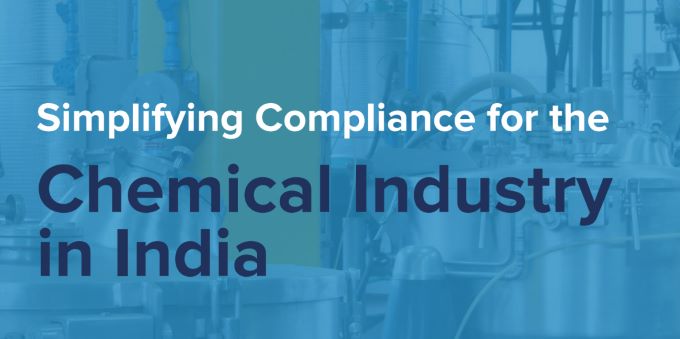
TeamLease Regtech, India’s leading Regulatory Technology (Regtech) solutions company, has released its report titled ‘Simplifying Compliance Management for the Chemical Industry.’ The report provides an overview of the complexity of compliance and the challenges entrepreneurs and employers face in the Chemical Industry. It also delves deep into the present regulatory framework and suggests actionable recommendations for enterprises and policymakers.
The chemical industry in India contributes 7% to India’s GDP and accounts for 11% of exports, with over 80,000 products. Production of this $220+ billion industry ranks 6th globally and 3rd in Asia and is expected to reach $1 trillion by 2040. In terms of employment, the industry provides jobs to over 2 million people. India is also a global supplier of dyestuffs and dye intermediaries, accounting for around 16% of the global production.
A single entity, chemical manufacturing enterprise with a single manufacturing unit operating in Maharashtra faces 635 unique obligations, of which 299 (47.1%) are at the union level, 332 (52.3%) are at the state level, and 4 (0.6%) are at the municipal level. However, this figure inflates to 1,545 once we factor in the frequency of these obligations. For instance, there are 53 monthly, 93 quarterly, and 48 half-yearly compliance requirements. The company must also obtain 72 licenses, permissions, and approvals under 52 acts. Even before starting construction of the site, the corporation must also complete over 60 one-time registrations and approvals, including 10 certificates/ approvals under the Maharashtra Regional and Town Planning Act, 1966.
Rishi Agrawal, CEO and Co-Founder, TeamLease RegTech says, “The Chemical Industry is a key driver of economic growth. The output it generates is essential for numerous sectors ranging from steel to pharmaceuticals to plastics, impacting everything from healthcare to technology. It employs over 2 million people and will be a major employment generator in ‘Amrit Kaal’. However, the complexities around compliance are a significant binding constraint to business growth. A typical chemical manufacturing company deals with 635 unique and over 1,545 total compliance obligations in a year. These compliances include at least 72 different types of licenses, permissions and registrations. It is here that digital compliance solutions and workflows can play a critical role in ensuring smooth compliance functioning within the organisation. This report explores the underlying complexities that affect employer compliance in the chemical industry.
Due to the nature of the industry, companies must comply with the Chemical Weapons Convention Act, 2000 and Chemical Weapons Convention Rules, 2016, Essential Commodities Act, 1955, and Insecticides Act, 1968 and Rules, 1971, among other acts. Depending on size, chemical companies must follow hundreds of laws and thousands of rules. There is also pressure to follow the Ministry of Environment, Forest, and Climate Change (MoEF&CC) chemical committee and Basic Chemicals, Cosmetics, and Dyes Export Promotion Council export regulations. Compliance also depends on the location of manufacturing units (industrial areas, export-oriented units, gramme panchayats, special economic zones, etc.), quantity and severity of chemicals manufactured, and use of specific equipment. Notifying the relevant authority to change threshold quantities is also difficult. Most Indian chemical companies struggle to track compliance with so many regulations.
The report reveals that an enterprise must obtain 72 licenses across Union, State, and Municipal/ Local levels. At the manufacturing unit level, labour compliances account for ~53% (334), commercial compliances make up more than 21% (136), and EHS constitutes over 15% (98) of the unique obligations. Once the frequency of these compliances is factored in, it is revealed that such a business must cater to up to 1,545 obligations in a year. These obligations rise exponentially as soon as the business increases its scale of operations and expands its geographical footprint. 53 regulations need to be complied with monthly, while 93 must be dealt with in every quarter. Tracking and managing all applicable regulatory obligations can be exceedingly difficult when done with Excel sheets dependent on people and done on an ad-hoc basis. The report concludes with recommendations for compliance reforms that can further improve the ease of doing business and provide a new-age solution for compliance management for employers.








